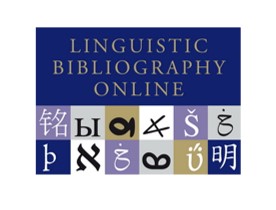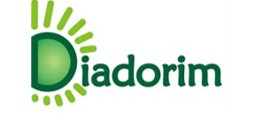Com todo o meu coração graças à literacia em saúde: a linguagem e a retórica em campanhas mediáticas portuguesas de saúde cardiovascular
DOI:
https://doi.org/10.11606/issn.2236-4242.v37i2p184-210Palavras-chave:
Linguagem, Imagem, Literacia em saúde, Saúde cardiovascular, Campanha mediáticaResumo
Este artigo foca-se no uso da linguagem e da retórica em campanhas mediáticas de saúde cardiovascular conduzidas por entidades portuguesas de cardiologia comprometidas com a literacia em saúde, incidindo no conteúdo (“o quê”) e na forma (“como”) da mensagem. A análise temática e a análise retórica foram aplicadas a um corpus de dez cartazes (2018-2023). Os resultados mostram que o pathos tende a suscitar várias reações (e.g., alarme, motivação para agir, medo, culpa, preocupação) que poderão instigar a ação. O logos é construído a partir de, por exemplo, dispositivos discursivos (e.g., utilização de perguntas, seleção de cores com fins conotativos, descrições de conceitos, isotopia) e dispositivos estilísticos, contribuindo para que a compreensão e o uso de informação possam ser mais efetivos. Encontram-se princípios de literacia em saúde presentes na mensagem.
Downloads
Referências
ALTHEIDE, D. L. Ethnographic content analysis. In: LEWIS-BECK, M.S.; BRYMAN, A.; LIAO, T.F. (Eds.), The Sage encyclopedia of social science research methods, 3 vols. Thousand Oaks, CA: Sage, 2004, p. 325-326.
American Heart Association (AHA). Life’s simple 7, 2020. Disponível em: https://playbook.heart.org/lifes-simple-7/. Acesso em: 27 maio 2024.
ARISTÓTELES. Retórica. Lisboa: Imprensa Nacional-Casa da Moeda, 2005.
ARKIN, E. B. Analysis of high blood pressure target audience and message test reports, 1978-1986. Bethesda, MD: National Heart, Lung, and Blood Institute, 1987.
ATKIN, C.K.; RICE, R.E. Theory and principles of public communication campaigns. In: RICE, R.E.; ATKIN, C.K. (Eds.), Public communication campaigns. Thousand Oaks: Sage, 2013, p. 3-20.
BARIK, A.L.; PURWANINGTYAS, R.A.; ASTUTI, D. The Effectiveness of Traditional Media (Leaflet and Poster) to Promote Health in a Community Setting in the Digital Era: A Systematic Review. Jurnal Ners, vol. 14, n. 3si, p. 76-80, 2019. DOI: http://dx.doi.org/10.20473/jn.v14i3(si).16988.
BELIM, C., & LAGIDO, S. Géneros e formatos televisivos da comunicação em saúde na televisão: O talk show Diga Doutor. Revista Mediterránea De Comunicación, vol. 12, n. 2, 2021, p. 301-319. DOI: https://doi.org/10.14198/MEDCOM.19870.
BELIM, C.; VAZ DE ALMEIDA. Health communication on models and practices in interpersonal and media contexts: emerging research and opportunities. Hershey: IGI Global, 2022.
BELLICHA, T.; MCGRATH, J. Mass media approaches to reducing cardiovascular disease risk. Public Health Reports, vol. 105, n. 3, 1990, p. 245-252.
BERWICK, D.M. Era 3 for medicine and health care. JAMA, vol. 315, n. 13, p. 1329-1330, 2016. DOI: https://doi.org/10.1001/jama.2016.1509.
BRUNER, J. Acts of meaning. Cambridge, MA: Harvard University Press, 1990.
BRYMAN, A. Social research methods. New York: Oxford University Press, 2012.
CASTELLANO, J.M.; NARULA, J.; CASTILLO, J.; FUSTER, V. Promoting cardiovascular health worldwide: Strategies, challenges, and opportunities. Revista Española de Cardiología, vol. 67, n. 9, 2014, p. 724-730. DOI: https://doi.org/10.1016/j.rec.2014.01.023.
CENTERS FOR DISEASE CONTROL AND PREVENTION. Simply put: A guide for creating easy-to-understand materials. Atlanta, Georgia: CDC, 2009
CORBETT, E. Classical rhetoric. In: RIVKIN, J.; RYAN, M. (Eds.), Literary theory, an anthology. Maiden: Blackwell Publishing, 2004, p. 142-161.
DICKINSON, J.K.; GUZMAN, S. J.; MARYNIUK, M.D.; O’BRIAN, C.A.; KADOHIRO, J.K.; JACKSON, R.A., D’HONDT, N.; MONTGOMERY, B.; CLOSE, K.L.; FUNNELL, M.M. The Use of Language in Diabetes Care and Education. Diabetes Care 1, vol. 40, n. 12, 2017, p. 1790–1799. DOI: https://doi.org/10.2337/dci17-0041.
DYSART-GALE, D. Techne, technology, and disenchantment in the wind in The Wind in the Willows. In HORNE, J.C.; WHITE, D.R. (Eds.), Kenneth Grahame’s The Wind in the Willows: A children’s classic at 100. Lanham: Scarecrow Press, 2010.
EL REFAIE, E. Visual metaphor and embodiment in graphic illness narratives. Oxford: Oxford University Press, 2019.
FISHER, W.R. Human communication as narration: Toward a philosophy of reason, value, and action. Columbia, SC: University of South Carolina Press, 1987.
GREEN, S. A rhetorical theory of diffusion. Academy of Management Review, vol. 29, n. 4, 2004, p. 653-669. DOI: https://doi.org/10.5465/AMR.2004.14497653.
GUAN, M.; MONAHAN, J., Positive affect related to health and risk messaging. Oxford Research Encyclopedias, 2017. DOI: https://doi.org/10.1093/acrefore/9780190228613.013.268.
HARTELIUS, E.; BROWNING, L. The application of rhetorical theory in managerial research. Management Communication Quarterly, vol. 22, n. 1, 2008, p. 13-39. DOI: https://doi.org/10.1177/0893318908318513.
HO, S.S.; YEE, A.Z.H. Presumed media influence in health and risk messaging. Oxford Research Encyclopedias, 2017.DOI: https://doi.org/10.1093/acrefore/9780190228613.013.294.
HOLT, R.; MACPHERSON, A. Sensemaking, rhetoric and the socially competent entrepreneur. International Small Business Journal, vol. 28, n. 1, 2010, p. 20-42. DOI: https://doi.org/10.1177/0266242609350822.
LANCAROTTE, I.; NOBRE, M.R. Primordial and primary prevention programs for cardiovascular diseases: From risk assessment through risk communication to risk reduction. A review of the literature. Clinics, vol. 71, n. 11, 2016, p. 667-678. DOI: https://doi.org/10.6061/clinics/2016(11)09.
LATIMER, A.E.; RIVERS, S.E.; RENCH, T.A.; KATULAK, N.A.; HICKS, A.; HODOROWSKI, J.K. ...; SALOVEY, P. A field experiment testing the utility of regulatory fit messages for promoting physical activity. Journal of Experimental Social Psychology, vol. 44, n. 3, 2008, p. 826-832. DOI: https://doi.org/10.1016/j.jesp.2007.07.013.
LONG, T.; TAUBENHEIM, A.M.; WAYMAN, J.; TEMPLE, S.; RUOFF, B.A. The Heart Truth: Using the Power of Branding and Social Marketing to Increase Awareness of Heart Disease in Women. Social Marketing Quarterly, vol. 14, n. 3, 2008 3–29. DOI: https://doi.org/10.1080/15245000802279334.
MAGNANI, J.W.; MUJAHID, M.S.; ARONOW, H.D.; CENÉ, C. W.; DICKSON, V.V.; HAVRANEK, E.; MORGENSTERN, L.B.; PAASCHE-ORLOW, M.K.; POLLAK, A.; WILLEY, J.Z.; American Heart Association Council on Epidemiology and Prevention; Council on Cardiovascular Disease in the Young; Council on Cardiovascular and Stroke Nursing; Council on Peripheral Vascular Disease; Council on Quality of Care and Outcomes Research; and Stroke Council. Health Literacy and Cardiovascular Disease: Fundamental Relevance to Primary and Secondary Prevention: A Scientific Statement From the American Heart Association. Circulation, vol. 138, n. 2, 2018, e48–e74. DOI: https://doi.org/10.1161/CIR.0000000000000579.
MONAHAN, J.L. Thinking positively: Using positive affect when designing health messages. In: MAIBACH, E.W.; PARROTT, R.L. Designing health messages: Approaches from communication theory and public health practice. Thousand Oaks: Sage, 1995, p. 81-90.
MURRAY-JOHNSON, L.; WITTE, K. Looking toward the future: Health message design strategies. In THOMPSON, T.; DORSEY, A.; MILLER, K.; PARROTT, R. (Eds.), Handbook of health communication. New Jersey: Lawrence Erlbaum Associates, 2003, p. 473-495.
NAI, R.L. Emotional flow in persuasive health messages. Health Communication, vol. 30, n. 2, 2014, p. 114-124. DOI: https://doi.org/10.1080/10410236.2014.974129.
NUNES, J.M. Reflexões de um médico de família a propósito do curso de literacia em saúde: Modelos, estratégias e intervenção. In: LOPES, C.; VAZ DE ALMEIDA, C. (Coords.). Literacia em saúde na prática. Lisboa: Edições ISPA, 2019, p. 33-41.
NUTBEAM, D. Health promotion glossary. Health Promotion International, vol. 13, n. 4, p. 349-364, 1998. DOI: https://doi.org/10.1093/heapro/13.4.349.
O’DONOHUE, W. Clinical psychology and the philosophy of sci¬ence. Switzerland: Springer, 2013.
O’KEEFE, D.J. Message generalizations that support evidence-based persuasive message design: Specifying the evidentiary requirements. Health Communication, vol. 30, n. 2, 2014, p. 106-113. DOI: https://doi.org/10.1080/10410236.2014.974123.
OGLI, S.Y.T. The importance of language in society. International Journal of Academic Multidisciplinary Research (IJAMR), vol. 4, n. 10, p. 116-118, 2020.
PAVLIK, J.V.; FINNEGAN, J.R., Jr.; STRICKLAND, D.; SALMON, C.T.; VISWANATH, K.; WACKMAN, D.B. Increasing public understanding of heart disease: An analysis of data from the Minnesota Heart Health Program. Health Communication, vol. 5, n. 1, 1993, p. 1-20. DOI: https://doi.org/10.1207/s15327027hc0501_1.
PFEFFER, I. Regulatory fit messages and physical activity motivation. Journal of Sport & Exercise Psychology, vol. 35, n. 2, 2013, p. 119-131. DOI: https://doi.org/10.1123/jsep.35.2.119.
REZAI, L.S.; CHIN, J.; BASSETT-GUNTER, R.; BURNS, C. Developing persuasive health messages for a behavior-change-support-system that promotes physical activity. In: Proceedings of the 2017 International Symposium on Human Factors and Ergonomics in Health Care. Santa Monica, CA: Human Factors and Ergonomics Society, 2017, p. 89-95.
SALEEBEY, D. The strengths perspective in social work practice: extensions and cautions. Soc Work, vol. 41, n. 3, p. 296-305, 1996.
SCHMIDT, D.J. Between word and image: Heidegger, Klee, and Gadamer on gesture and genesis. Bloomington: Indiana University Press, 2012.
SHARF, B. Physician-patient communication as interpersonal rethoric: A narrative approach. Health Communication, vol. 2, n. 4, 1990, p. 217-231. DOI: https://doi.org/10.1207/s15327027hc0204_2.
SHARF, B.; VANDERFORD, M. Illness narratives and the social construction of health. In T. THOMPSON, A.; DORSEY, K.; MILLER; PARROTT, R. (Eds.), Handbook of health communication. New Jersey: Lawrence Erlbaum Associates, 2003, p. 9-34.
SIC NOTÍCIAS. O que dizem os peritos sobre a orientação clínica no pós-enfarte, 2023. Disponível em: https://sicnoticias.pt/webstories/o-que-dizem-os-peritos-sobre-a-orientacaoo-clinica-no-pos-enfarte. Acesso em: 27 maio 2024.
SIC NOTÍCIAS; LUSA. A cada 15 minutos, morre uma pessoa por doença cardiovascular em Portugal, 2023. Disponível em: https://sicnoticias.pt/saude-e-bem-estar/2023-05-11-A-cada-15-minutos-morre-uma-pessoa-por-doenca-cardiovascular-em-Portugal-721ef0b0. Acesso em: 27 maio 2024.
SRIVASTAVA, S.B. Language: A powerful tool in promoting healthy behaviors. American journal of lifestyle medicine, vol. 13, n. 4, p. 359-361, 2019. DOI: https://doi.org/10.1177/1559827619839995.
TE, V.; FORD, P.; SCHUBERT, L. Exploring social media campaigns against sugar-sweetened beverage consumption: A systematic search. Cogent Medicine, vol. 6, n. 1, 2019. DOI: https://doi.org/10.1080/2331205X.2019.1607432.
TING, S. Ethos, logos and pathos in university students’ informal requests. Journal of Language Studies, vol. 18, n. 1, 2018, p. 234-251. DOI: https://doi.org/10.17576/gema-2018-1801-14.
VAZ DE ALMEIDA, C. Linguagem clara em literacia em saúde. In: VAZ DE ALMEIDA, C.; FRAGOEIRO, I., Manual de literacia em saúde: Princípios e práticas. Lisboa: Pactor, 2023, p. 211-218.
VAZ DE ALMEIDA, C. O modelo ACP e a experiência do paciente como caminho para uma melhor literacia em saúde. In: LOPES, C; VAZ DE ALMEIDA, C. (Coords.), Literacia em saúde na prática. Lisboa: Edições ISPA [ebook], 2022, p. 31-46.
WAKEFIELD, M.A.; LOKEN, B.; HORNIK, R.C. Use of mass media campaigns to change health behavior. The Lancet, vol. 376, n. 9748, 2010, p. 1261-1271. DOI: https://doi.org/10.1016/S0140-6736(10)60809-4.
WALSH, R. T.; BILLIG, M. Rhetoric. In: TEO, T. (Ed.), Encyclopedia of critical psychology. New York: Springer, 2014, p. 1677-1682.
WEDRO, B. Heart disease (Cardiovascular disease, CVD). MedicineNet, 2017. Disponível em: https://www.medicinenet.com/heart_disease_coronary_artery_disease/article.htm#how_many_people_have_heart_cardiovascular_disease_and_what_is_the_prognosis. Acesso em: 27 maio 2024.
WORLD HEALTH ORGANIZATION (WHO). Cardiovascular diseases (CVDs), 2021. Disponível em: https://www.who.int/news-room/fact-sheets/detail/cardiovascular-diseases-(cvds). Acesso em: 27 maio 2024.
WHO. Health promotion, 2023. Disponível em: https://www.who.int/teams/health-promotion/enhanced-wellbeing/ninth-global-conference/health-literacy. Acesso em: 27 maio 2024.
WORLD HEART FEDERATION. World Heart Report 2023: Confronting the world’s number One killer. Geneva, Switzerland: World Heart Federation. 2023.
Downloads
Publicado
Edição
Seção
Licença
Copyright (c) 2024 Célia Belim

Este trabalho está licenciado sob uma licença Creative Commons Attribution-NonCommercial 4.0 International License.
A aprovação dos manuscritos implica cessão imediata e sem ônus dos direitos de publicação para a Linha D'Água. Os direitos autorais dos artigos publicados pertencem à instituição a qual a revista encontra-se vinculada. Em relação à disponibilidade dos conteúdos, a Linha D'Água adota a Licença Creative Commons, CC BY-NC Atribuição não comercial. Com essa licença é permitido acessar, baixar (download), copiar, imprimir, compartilhar, reutilizar e distribuir os artigos, desde que para uso não comercial e com a citação da fonte, conferindo os devidos créditos autorais à revista.
Nesses casos, em conformidade com a política de acesso livre e universal aos conteúdos, nenhuma permissão é necessária por parte dos autores ou do Editor. Em quaisquer outras situações a reprodução total ou parcial dos artigos da Linha D'Água em outras publicações, por quaisquer meios, para quaisquer outros fins que sejam natureza comercial, está condicionada à autorização por escrito do Editor.
Reproduções parciais de artigos (resumo, abstract, resumen, partes do texto que excedam 500 palavras, tabelas, figuras e outras ilustrações) requerem permissão por escrito dos detentores dos direitos autorais.
Reprodução parcial de outras publicações
Citações com mais de 500 palavras, reprodução de uma ou mais figuras, tabelas ou outras ilustrações devem ter permissão escrita do detentor dos direitos autorais do trabalho original para a reprodução especificada na revista Linha D'Água. A permissão deve ser endereçada ao autor do manuscrito submetido. Os direitos obtidos secundariamente não serão repassados em nenhuma circunstância.











